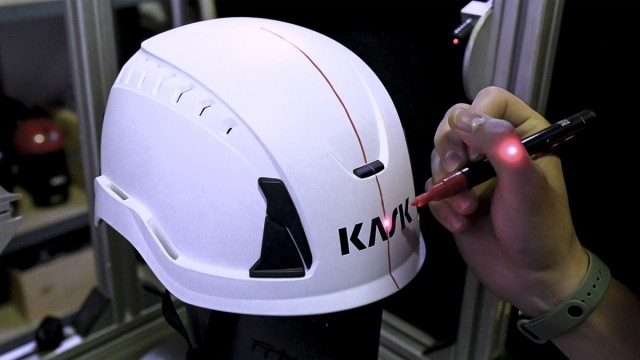
KASK has been using this protocol, since 2019, to test all products – cycling, equestrian, snow sports, and industrial safety helmets.
*BrIC is an algorithm that defines the level of brain injury. A lower number corresponds to a lower risk of injury. Pronounced “brick”, it stands for Brain Injury Criteria. Recent research has indicated a value of <0.68 for athletes.†

While there is no formal standard, WG11 reflects best practices in testing
and the strictest criteria for evaluating rotational impact protection.

While standardization committees and groups have worked on the topic over the years, rotational impact testing has not been included in any formal standard globally for industrial, cycling, equestrian, snow sport, or climbing helmets.
Only recently has the European Union updated the motorcycle helmet safety standard to include testing for rotational impact. The new standard ECE 22.06, in effect as
of 2020, includes a specific testing method and criteria for rotational impact.
The KASK ROTATIONAL IMPACT WG11 TEST is grounded in this new standard.
| Headform | EN960: friction coefficient = 0.3 |
| Drop Speed | Speed at impact: 4.5 meters/second |
| Anvil | 45-degree shaped anvil |
| Anvil Coating | 80-grit oxide abrasive |
| Accelerometer | wireless triaxle (X, Y, & Z axis) |
| Pass/Fail | BrIC value <0.68** (lower = lower risk of concussion) |
A headform with helmet is dropped
at height and reaches a velocity before impact of 4.5 meters per second.
The headform is dropped onto
a 45-degree anvil coated with an 80-grit oxide sandpaper. This simulates a rough surface and a “rotational impact”.
The EN960 series headform is used, as it is specified in the ECE 22.06 standard, and is considered to be the most accurate representation of a human biological system available.
KASK has established a “pass/fail” criteria based on a BrIC value of <0.68.†

The KASK Rotational Impact WG11 Test ensures all wearers get home safely. At KASK, advanced performance and head protection are a continuous pursuit.



For more information about the KASK Rotational Impact WG11 Test please complete the fields below.
 Performance is a beautiful thing.
Performance is a beautiful thing.